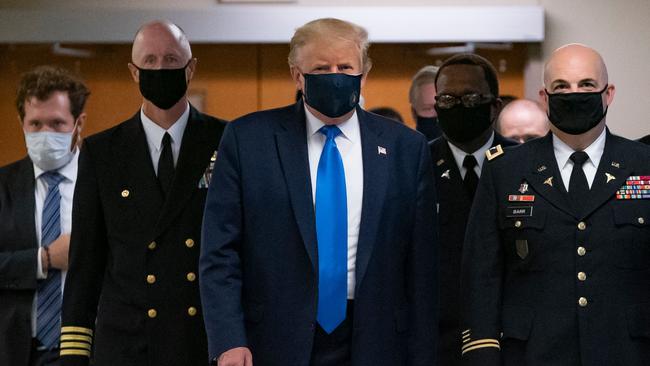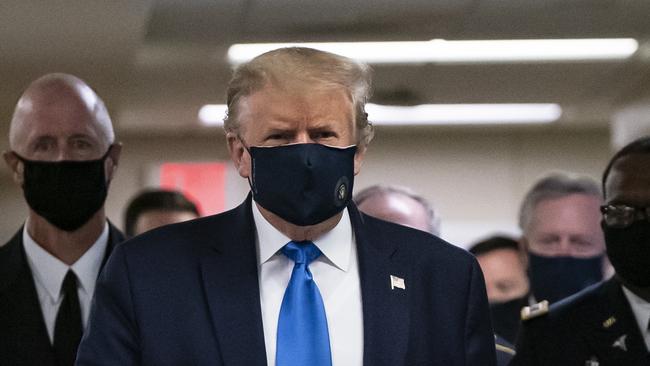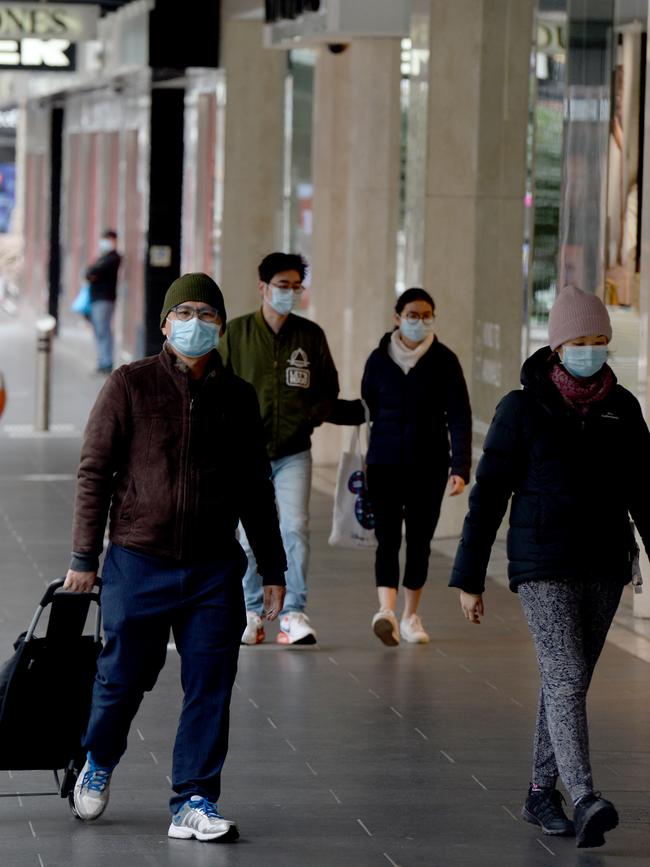Donald Trump wears face mask as WHO acknowledges airborne spread risk
It’s an uncommon sight, but US President Donald Trump has appeared in public wearing a face mask.

It’s an uncommon sight, but US President Donald Trump has appeared in public wearing a face mask.
Mr Trump covered up for a visit to the Walter Reed National Military Medical Centre in Bethesda, Maryland, a short time ago.
The President has previously resisted US health advice to wear a mask in public, but he said it was appropriate as he met with wounded soldiers at the hospital.
“I think when you’re in a hospital, in that particular setting, I think it’s a great thing to wear a mask, “ he said.
“I’ve never been against masks.”
As countries faced with flare-ups adopt different strategies, the debate over face masks is coming down in favour worldwide.
Victorian Premier Daniel Andrews on Friday recommended the wearing of masks in public where social distancing was not possible, such as on public transport or in shopping centres.
The World Health Organisation is acknowledging the possibility that COVID-19 might be spread in the air under certain conditions — after more than 200 scientists urged the agency to do so.

In an open letter published this week in a journal, two scientists from Australia and the US wrote that studies have shown “beyond any reasonable doubt that viruses are released during exhalation, talking and coughing in microdroplets small enough to remain aloft in the air.”
The researchers, along with more than 200 others, appealed for national and international authorities, including WHO, to adopt more stringent protective measures.
WHO has long dismissed the possibility that the coronavirus is spread in the air except for certain risky medical procedures, such as when patients are first put on breathing machines.

In a change to its previous thinking, WHO noted on Thursday that studies evaluating COVID-19 outbreaks in restaurants, choir practices and fitness classes suggested the virus might have been spread in the air.
Airborne spread “particularly in specific indoor locations, such as crowded and inadequately ventilated spaces over a prolonged period of time with infected persons cannot be ruled out,” WHO said.
Still, officials also pointed out that other modes of transmission — like contaminated surfaces or close contacts between people in such indoor environments — might also have explained the disease’s spread.
With AP




To join the conversation, please log in. Don't have an account? Register
Join the conversation, you are commenting as Logout